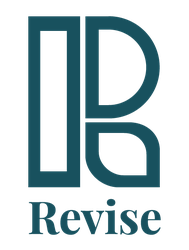Profit forecast; yearly or monthly?
“Every company should prepare a three-month rolling forecast.”
The budgets of this year have just been ratified, and many breathe a sigh of relief; no need to repeat this until next year. Therefore, I present this challenge now, with budgeting still in fresh memory.
Rolling forecasting
Forecasting monitors the short-term realism of the budget. This does not mean that budgeting has to be repeated monthly, since budgets and forecasts have different functions. In budgeting, the operations for the coming year are estimated, and the result is expressed in numbers; a budget represents a target which is believed to be achieved in the future. In a three-month rolling forecast, the sales, turnover and expenses for the following three months are estimated based on the best data available at the moment. This is compared with the corresponding budget, which enables analysis of the attainability of the budget in the current situation.
On many business areas, changes happen always faster and faster, and therefore a year is beginning to be a too long time for committing to one set goal. In one year, such large changes may occur that the adjustment of operations cannot wait until the next budget – much faster action is required. In a rolling forecast, the effects of changes in business can be seen quickly, allowing for immediate reactions.
If changes in business cause a large deviation from the budget, a new forecast can be made for the duration of the rest of the budget, replacing the original budget. This allows for updating the targets for the financial period in the new situation. This applies for both budget under- and overruns; if for example turnover and profit grow faster than expected, every company wishes to ensure the resources for achieving it.
Rolling budgeting
Rolling budgeting is not the same as rolling forecasting. In rolling budgeting, one month is always added after the 12 months, when the actual reports of previous month are received. In this way, the budget (targets) for the following 12 months are constantly maintained. This offers great benefits for management systems and decision making. My recommendation, however, is to first get rolling forecasting to function and make the process of forecasting simple enough; when this has been achieved, adding rolling budgeting is a rather straightforward task.
Simple is beautiful
Forecasting proceed in a simple way, when using a clear process. A good motto for this, as for many other things, is: ’Simple is beautiful’. Clear and functional reporting forms are needed, including actual data on the chosen time interval:
- sales forecast
- turnover forecast derived from the sales delivery times
- both above include sales margin forecasts
- fixed costs, preferably per type of cost
- write-offs, financing items and taxes should be calculated/allocated onto periods
- investments
Reports and fill-in forms must contain the following information:
- actual data on the previous months of the financial period
- for the next three months, the figures from previous forecast
- for the months following these, the figures of the budget
Depending on the size and line of business of the company, almost an infinite number of data, operations and levels of review can be added to the process. However, it is not a good idea to add all of them; only the most important indicators, on which there is historical data available on the same level, should be included.
Tools for forecasting
Today, there already exist a few reasonably priced and good reporting and forecasting systems, with the ability to combine data from budget, actual data and the data from the previous forecast automatically. This enables the author of the forecast to truly focus on analysis and making the new estimate. Of course, this is the most demanding part of the process, especially in terms of sales and turnover. In addition to good background reports, the forecasting experience of the author of the forecast is extremely important. With budgeting done once in a year, no significant accumulation of experience happens. A three-month forecast done every month, however, accumulates experience so that the reliability of the forecast improves considerably already after six months. Comparisons and analysis between the forecast and the actual data for the previous month are essential learning tools for realistic forecasting.
Analysis and decision making
After the rolling forecast has been made, it is time for analysis. When the differences between the forecast, the budget and the previous forecast are assessed, the development trends of the operation are revealed.
When differences are small, the operation runs according to plans. When differences become greater, decision have to be made on the necessary actions: how to increase sales, whether more or less resources are required, and what other actions are needed. It is important that the analysis and decision making starts immediately after the first differences are noticed. Assessing the need for change becomes a part of everyday management, and change becomes a part of everyday operations. Huge surprises are left out of the operation; especially in the case of negative surprises, nobody will miss them.
In a healthy business, there is need for cash flow forecast where can be seen for example the amount of money that can be invested in short-term. If the business situation is more challenging, well-made forecasts are an absolute necessity. Then cash flow forecasts, especially 12 weeks’ rolling cash flow forecast, and different types of payment plans, will be analyzed weekly, not only monthly. With the help of these, it is possible to systematically recover from temporary downturns. Also during a deeper crisis, a weekly cash flow forecast can reveal the extent of required actions. Despite its importance, only a few forecasting systems can handle weekly cash flow forecasts today.
Forecasting makes it possible for the company business to keep pace of the continuous changes in environment. If you are interested to hear more, please contact us.
